Accepted Scientific Name: Mammillaria senilis Lodd. ex Salm-Dyck
Cact. Hort. Dyck. (1849) 8, 82 (1850); et: K. Schum. Gesamtbeschreib. Kakt. 511 (1898).

Mamillopsis senilis (Mammillaria senilis) Photo by: Andrea B.
Origin and Habitat: Chihuahua, Jalisco and Sinaloa, Mexico.
Altitude: 2400-2800 metres above sea level.
Habitat: Grows on moss-covered boulders in pine forests at high altitudes.
Synonyms:
See all synonyms of Mammillaria senilis
back
Accepted name in llifle Database:Mammillaria senilis Lodd. ex Salm-DyckCact. Hort. Dyck. (1849) 8, 82 (1850); et: K. Schum. Gesamtbeschreib. Kakt. 511 (1898).Synonymy: 9
back
Common Names include:
SPANISH (Español): Cabeza de viejo
TARAHUMARA: Híkuli rosapara, Híkuli dewéame, Hikuri reweame
Description: Mammillaria senilisSN|9677]]SN|9677]] is a very ornamental cactus species that looks like a cotton ball with small but deadly sharp, glistening hooked white spines and many white radials. The large red flowers are very showy too.
Habit. Branching basally to form clumps.
Stems: Globose to cylindrical, up to 15 cm tall and 10 cm wide. The tubercles are conical, obtuse with wool and bristles in the axil. Without latex.
Radial spines: 30-40, thinner than the centrals, white, to 20 mm long.
Central spines: 4-6, white with yellow tips, upper and lower ones hooked.
Flower: Usually orange-red, but also yellow or near white to pink (rare), 60 - 70 mm long, 55-60 mm in diameter. Floral tubes slender, scaly, to 4 cm long.
Blooming season: February and March.
Fruits: Silvery red to greenish white.
Seeds: Black.
Subspecies, varieties, forms and cultivars of plants belonging to the Mammillaria senilis group
 Mammillaria senilis Lodd. ex Salm-Dyck: looks like a cotton ball with small but deadly sharp, glistening hooked white spines and many white radials. The flowers are large red and very showy. Distribution: Chihuahua, Jalisco and Sinaloa.
Mammillaria senilis Lodd. ex Salm-Dyck: looks like a cotton ball with small but deadly sharp, glistening hooked white spines and many white radials. The flowers are large red and very showy. Distribution: Chihuahua, Jalisco and Sinaloa. Mammillaria senilis var. albiflora hort.: differs from the type only for the colour of the flowers, which are white instead of red, they are very showy too.
Mammillaria senilis var. albiflora hort.: differs from the type only for the colour of the flowers, which are white instead of red, they are very showy too.- Mammillaria senilis var. diguetii F.A.C.Weber
Notes: Mamilopsis (Mammillaria) senilis, was placed in a separate genus due to various differing characteristics involving flower shape (The flowers have a characteristic zygomorphic structure - unlike the other mammillarias - with tube possessing obvious "scales" - i.e. fleshy reduced sepaloids - and by the apparent lack of fragrance in the flower) , size, seed and pollen morphology. The genus Mamilopsis includes only Mamilopsis senilis. Notice that contrarily to the name Mammillaria, Mamillopsis has only one 'm'.
Bibliography: Major references and further lectures
1) John Pilbeam “Mammillaria: the cactus file handbook” Cirio Publishing Services Ltd Dec/30,/1999
2) Nathaniel L. Britton, J. N. Rose “Cactaceae: Descriptions and Illustrations of Plants of the Cactus” Volume IV. The Carnegie Institution of Washington Washington, 24/Dec/1923
3) Edward Anderson “The Cactus family” Timber Press, Incorporated, 2001
4) James Cullen, Sabina G. Knees, H. Suzanne Cubey "The European Garden Flora Flowering Plants: A Manual for the Identification of Plants Cultivated in Europe, Both Out-of-Doors and Under Glass" Cambridge University Press, 11/Aug/2011
5) David R Hunt; Nigel P Taylor; Graham Charles; International Cactaceae Systematics Group. "The New Cactus Lexicon" dh books, 2006
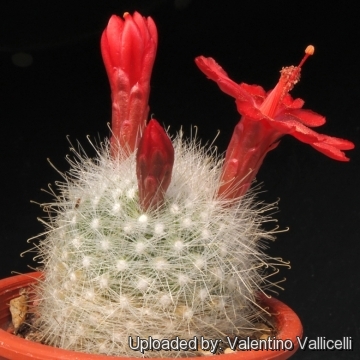 Mamillopsis senilis (Mammillaria senilis) Photo by: Valentino Vallicelli
Mamillopsis senilis (Mammillaria senilis) Photo by: Valentino Vallicelli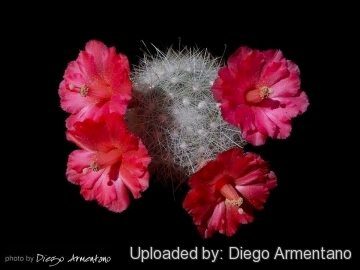 Mamillopsis senilis (Mammillaria senilis) Photo by: Diego Armentano
Mamillopsis senilis (Mammillaria senilis) Photo by: Diego Armentano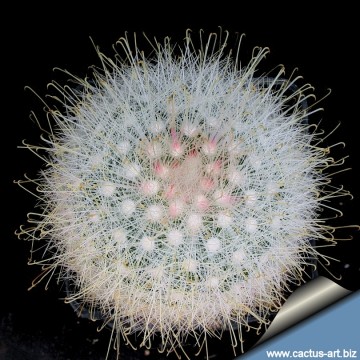 Mamillopsis senilis (Mammillaria senilis) Photo by: Cactus Art
Mamillopsis senilis (Mammillaria senilis) Photo by: Cactus Art Mamillopsis senilis (Mammillaria senilis) Photo by: Cactus Art
Mamillopsis senilis (Mammillaria senilis) Photo by: Cactus Art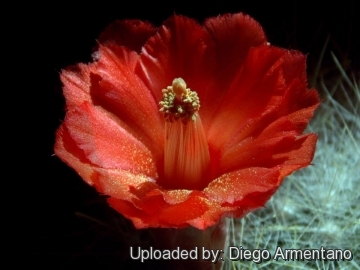 Mamillopsis senilis (Mammillaria senilis) Photo by: Diego Armentano
Mamillopsis senilis (Mammillaria senilis) Photo by: Diego Armentano Mamillopsis senilis (Mammillaria senilis) Photo by: Valentino Vallicelli
Mamillopsis senilis (Mammillaria senilis) Photo by: Valentino Vallicelli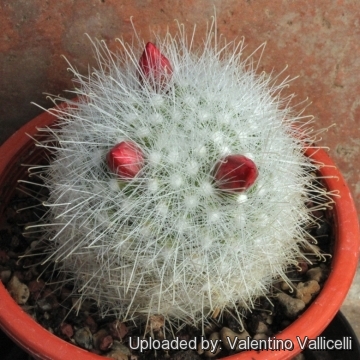 Mamillopsis senilis (Mammillaria senilis) Photo by: Valentino Vallicelli
Mamillopsis senilis (Mammillaria senilis) Photo by: Valentino Vallicelli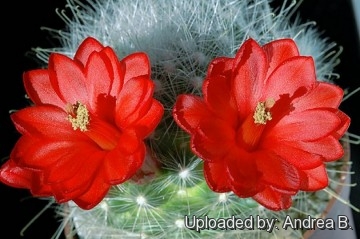 - This is a very ornamental plant that looks like a cotton ball with small but deadly sharp, glistening hooked white spines and many white radials. (Mammillaria senilis) Photo by: Andrea B.
- This is a very ornamental plant that looks like a cotton ball with small but deadly sharp, glistening hooked white spines and many white radials. (Mammillaria senilis) Photo by: Andrea B.Cultivation and Propagation: Mammillaria senilisSN|9677]]SN|9677]] is a slow growing species and one of the most difficult Mammillaria to keep and grow that needs lots of light with ample airflow. Water regularly in summer, but do not overwater (very wet-sensitively, especially in light of its small root system) Water thoroughly only if soil is dry to the touch, let soil dry in between to prevent root rot, keep very dry in winter. Use a very porous acidic potting media (Avoid to add limestone!), with excellent drainage, as can be achieved by the addition of extra perlite or pumice. Feed with a high potassium fertilizer in summer. It is a mountain plant that prefers somewhat cooler temps and it proved to be quite frost resistant if kept dry and hardy as low as -5° C (some reports give it hardy to -10°C or less) Sun Exposure: High levels of light are needed to flower and for good spine development. Can be sunburned if moved from shade/greenhouse into full sun too quickly. During the spring it may be able to take full sun until the heat arrives at the end of spring. In an area that has hot afternoon sun, it may be able to take full morning sun, but requires afternoon shade or afternoon light shade. If grown correctly, it will reward the grower with generous displays of red flowers. A resting period in winter and strong light are necessary so that it can flower properly.
Clustering in cultivation after several years and easily flowered. For best results, use a shallow pot, and only use the smallest diameter pot that will accommodate the plant. Sensitive to red spider mite. Overhead watering is helpful in controlling mites.
Propagation: Direct sow after last frost (usually) or division, wait until the offsets that appear at the base of old clustered specimens are 1/3 the size of the parent and then detach and plant.
Your Photos

by Valentino Vallicelli

by Valentino Vallicelli

by Andrea B.

by Cactus Art























